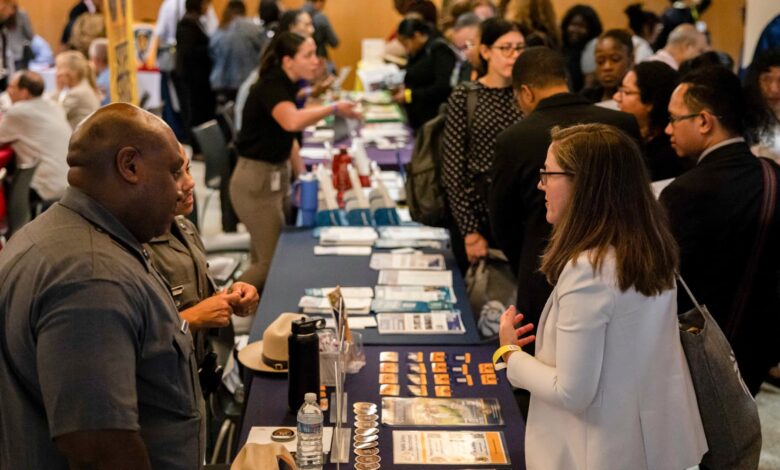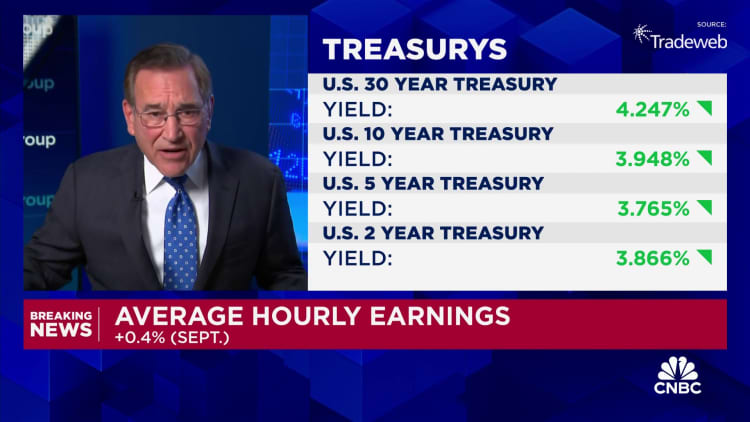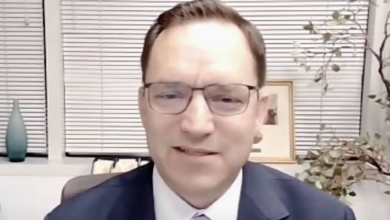U.S. job creation roared higher in September as payrolls surged by 254,000


The U.S. economy added far more jobs than expected in September, pointing to a vital employment picture as the unemployment rate edged lower, the Labor Department reported Friday.
Nonfarm payrolls surged by 254,000 for the month, up from a revised 159,000 in August and better than the 150,000 Dow Jones consensus forecast. The unemployment rate fell to 4.1%, down 0.1 percentage point.
With upward revisions from previous months, the report eases concerns about the state of the labor market and likely locks in the Federal Reserve to a more gradual pace of interest rate reductions. August’s total was revised up by 17,000, while July saw a much larger addition of 55,000, taking the monthly growth up to 144,000.
Strength in job creation spilled over to wages, as average hourly earnings increased 0.4% on the month and were up 4% from a year ago. Both figures were ahead of respective estimates for gains of 0.3% and 3.8%. The average workweek nudged lower to 34.2 hours, down 0.1 hour.
“It was ‘wow’ across the board, much stronger than expected,” Kathy Jones, chief fixed income strategist at Charles Schwab, said of the report. “The bottom line is it was a very good report. You get upward revisions and it tells you the job market continues to be healthy, and that means the economy is healthy.”
Stock market futures added to gains following the report while Treasury yields moved sharply higher.
Restaurants and bars led job creation for the month, with the hospitality industry adding 69,000 positions in September after averaging just 14,000 over the previous 12 months.
Health care, a consistent leader in job growth, contributed 45,000, while government grew by 31,000. Other gainers included social assistance (27,000) and construction (25,000).
A more encompassing measure of unemployment that includes discouraged workers and those holding part-time jobs for economic reasons dropped to 7.7%. The share of the workforce either working or looking for work, known as the labor force participation rate, held steady at 62.7%.
The survey of household employment, which is used to calculate the unemployment rate, showed an even stronger picture, with a gain of 430,000 as the employment-to-population ratio increasing to 60.2%, an increase of 0.2 percentage point.
Job creation tilted strongly to full-time positions, which were up 414,000, while those reporting part-time work fell by 95,000.
Futures market pricing shifted sharply after the report, with traders now assigning a strong chance of consecutive quarter percentage point interest rate cuts from the Federal Reserve in November and December.
The report comes with questions over the labor market’s strength and how that will impact the Fed’s approach to lowering interest rates.
Earlier this week, Fed Chair Jerome Powell characterized the jobs picture as “solid” but said it has “clearly cooled” over the past year.
There have been scant signs of a stepped-up pace of layoffs, as new claims for unemployment benefits have held steady but hiring rates have cooled. Business surveys, including the Fed’s own “Beige Book” summary of business conditions, indicate that companies are holding headcounts fairly steady.
Powell and other Fed officials have indicated a willingness to continue lowering interest rates following last month’s half percentage point cut in the overnight borrowing level. However, there’s considerable debate within the market about how quickly the central bank will act, and Powell said Monday he expects the Fed to move in quarter-point increments at least through the end of the year.




